Takashi Murakami Eye Love SUPERFLAT 2003 Acrylic on canvas laid down on board. 70 7/8 x 70 7/8 in. (180 x 180 cm). Signed and dated “Takashi 03” on the reverse; also inscribed by the artist’s studio and stamped on the reverse.
Provenance Marianne Boesky Gallery, New York Exhibited New York, Marianne Boesky Gallery, Takashi Murakami Superflat Monogram, April 11 - May 10, 2003; Los Angeles, The Museum of Contemporary Art at the Geffen Contemporary; Brooklyn, Brooklyn Museum of Art; Frankfurt, Museum für Moderne Kunst; Bilbao, Guggenheim Museum, © Murakami, October 29, 2007 – May 31, 2009 Literature P. Schimmel, © Murakami, New York, 2007, p. 304 (illustrated) Catalogue Essay © 2003 Takashi Murakami/Kaikai Kiki Co., Ltd. All Rights Reserved In 2003, at the invitation of designer Marc Jacobs Takashi Murakami shocked the world when he began his entrepreneurial collaboration with Moët Hennessey Louis Vuitton (LVMH). Called the Eye Love Monogram, the artist’s series of handbags combined his own trademark eyes with Louis Vuitton’s signature monogram in ninety-seven different colors, repeated on both black and white backgrounds. While Murakami was already well versed in the commercial distribution and dissemination of his own brand, this particular project granted him the opportunity to produce a high-end luxury product that achieved its level of visibility through advertising. When asked whether or not his partnership with Louis Vuitton influenced his art, the artist explained, “One-hundred percent yes. When I started with them, I totally didn’t know. ‘What is a Louis Vuitton?’ Now I understand: They make large, very expensive bags. This is the same way paintings are very expensive.” (A. Peers, “Superflatbush,” (interview with Murakami) New York Magazine, March 24, 2008). During their collaboration, however, Murakami never lost his identity in the LVMH brand. Rather, he activated a process of cross-breeding through which he was able to infuse the brand with his own signature aesthetic. Produced in 2003 as part of his series of acrylic on canvas paintings that feature the now iconic Eye Love Monogram, Eye Love SUPERFLAT reflects the way in which Murakami continuously calls into question the boundary between art and commerce. It comes as no surprise that since his emergence in the 1990s, Murakami has been perceived as a contemporary practitioner of American Pop. Like Warhol, Murakami “appropriated business as an art form and adopted corporate branding strategies…[and] put those strategies in service of the global projection and promotion of exotic metropolitan taste formations” [P. Schimmel, © Murakami, New York, 2007, pp. 19-20]. Furthermore, Murakami is a leveler; flattening not only the picture plane but also the hierarchies between high and low; between art and commodity and between the art world and fashion. What namely distinguishes Murakami from the Pop master, however, is his preoccupation with indigenous Japanese culture. Fusing these two concerns is the term Superflat, which the artists uses to refer to various flattened forms in Japanese animation, graphic art, pop culture and the shallowness of Japanese consumer culture. As the very title of this work acknowledges, here, as in his other works, Superflat functions as “a tactical domination device operated by its designer as a means for taking over/making over what provincial insiders still insist on calling the “art world” (as if it were a medieval guild) at the moment when that “world” is being redimensionalized and reterritorialized by the uber-IED known as globalization” [P. Schimmel, © Murakami, New York, 2007, p. 24]. Read More
Takashi Murakami Eye Love SUPERFLAT 2003 Acrylic on canvas laid down on board. 70 7/8 x 70 7/8 in. (180 x 180 cm). Signed and dated “Takashi 03” on the reverse; also inscribed by the artist’s studio and stamped on the reverse.
Provenance Marianne Boesky Gallery, New York Exhibited New York, Marianne Boesky Gallery, Takashi Murakami Superflat Monogram, April 11 - May 10, 2003; Los Angeles, The Museum of Contemporary Art at the Geffen Contemporary; Brooklyn, Brooklyn Museum of Art; Frankfurt, Museum für Moderne Kunst; Bilbao, Guggenheim Museum, © Murakami, October 29, 2007 – May 31, 2009 Literature P. Schimmel, © Murakami, New York, 2007, p. 304 (illustrated) Catalogue Essay © 2003 Takashi Murakami/Kaikai Kiki Co., Ltd. All Rights Reserved In 2003, at the invitation of designer Marc Jacobs Takashi Murakami shocked the world when he began his entrepreneurial collaboration with Moët Hennessey Louis Vuitton (LVMH). Called the Eye Love Monogram, the artist’s series of handbags combined his own trademark eyes with Louis Vuitton’s signature monogram in ninety-seven different colors, repeated on both black and white backgrounds. While Murakami was already well versed in the commercial distribution and dissemination of his own brand, this particular project granted him the opportunity to produce a high-end luxury product that achieved its level of visibility through advertising. When asked whether or not his partnership with Louis Vuitton influenced his art, the artist explained, “One-hundred percent yes. When I started with them, I totally didn’t know. ‘What is a Louis Vuitton?’ Now I understand: They make large, very expensive bags. This is the same way paintings are very expensive.” (A. Peers, “Superflatbush,” (interview with Murakami) New York Magazine, March 24, 2008). During their collaboration, however, Murakami never lost his identity in the LVMH brand. Rather, he activated a process of cross-breeding through which he was able to infuse the brand with his own signature aesthetic. Produced in 2003 as part of his series of acrylic on canvas paintings that feature the now iconic Eye Love Monogram, Eye Love SUPERFLAT reflects the way in which Murakami continuously calls into question the boundary between art and commerce. It comes as no surprise that since his emergence in the 1990s, Murakami has been perceived as a contemporary practitioner of American Pop. Like Warhol, Murakami “appropriated business as an art form and adopted corporate branding strategies…[and] put those strategies in service of the global projection and promotion of exotic metropolitan taste formations” [P. Schimmel, © Murakami, New York, 2007, pp. 19-20]. Furthermore, Murakami is a leveler; flattening not only the picture plane but also the hierarchies between high and low; between art and commodity and between the art world and fashion. What namely distinguishes Murakami from the Pop master, however, is his preoccupation with indigenous Japanese culture. Fusing these two concerns is the term Superflat, which the artists uses to refer to various flattened forms in Japanese animation, graphic art, pop culture and the shallowness of Japanese consumer culture. As the very title of this work acknowledges, here, as in his other works, Superflat functions as “a tactical domination device operated by its designer as a means for taking over/making over what provincial insiders still insist on calling the “art world” (as if it were a medieval guild) at the moment when that “world” is being redimensionalized and reterritorialized by the uber-IED known as globalization” [P. Schimmel, © Murakami, New York, 2007, p. 24]. Read More
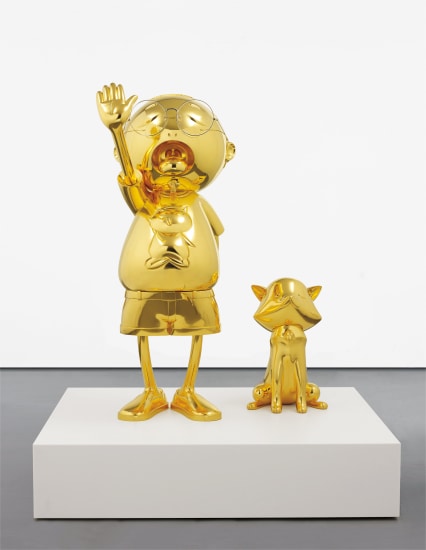




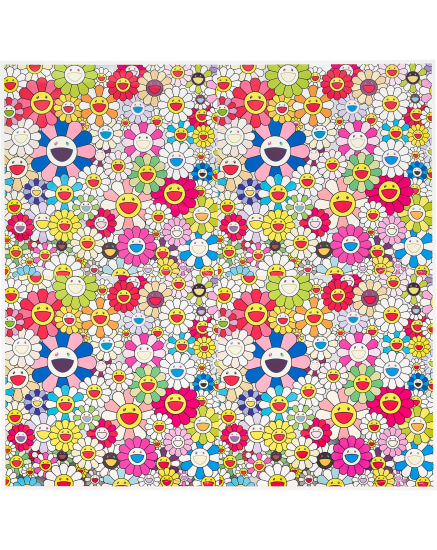

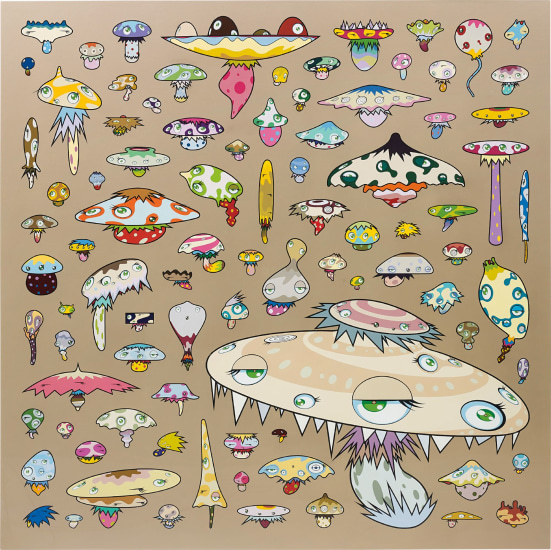

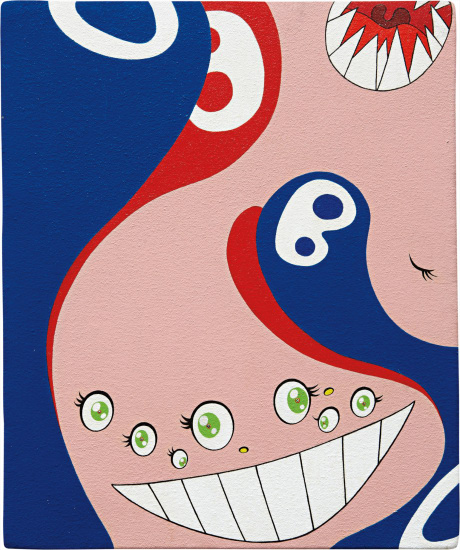

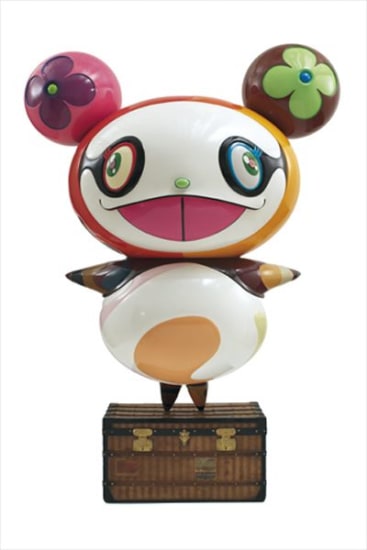
Try LotSearch and its premium features for 7 days - without any costs!
Be notified automatically about new items in upcoming auctions.
Create an alert